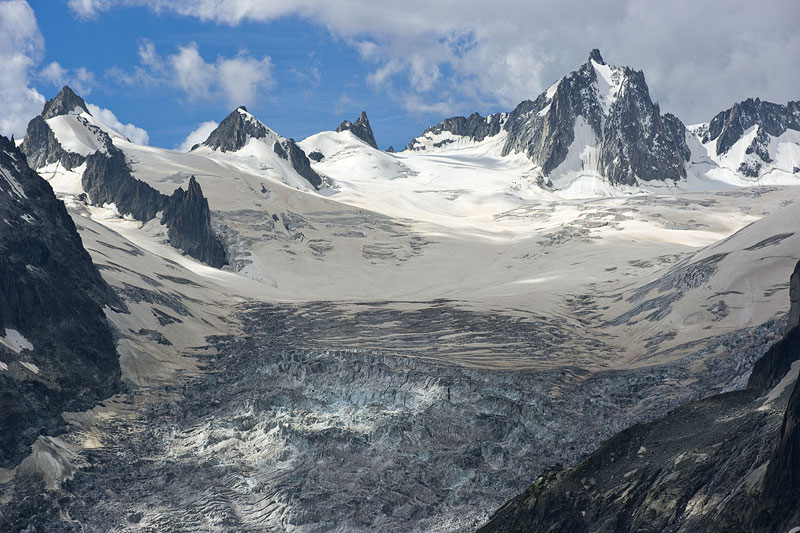Mer de GlaceLength: 12 km; orientation: north; surface area: 32 km2 (biggest glacier in France). |
 Classical view from Montenvers over the tongue of Mer de Glace towards Grandes Jorasses. |  Typical for this glacier are prominent ogives (view from Echelets). |  Due to faster ice movement in the middle of the glacier the ogives are deformed more and more towards the glacier terminus. |  Panorama photo over the tongue of Mer de Glace from the true right valley side. |
 Tourist infrastructure near the upper end of the Montenvers railway. |  Descending towards the Mer de Glace ice cave. |  Because of the ice movement the caves have to be rebuilt every year. |  Tourists in the access tunnel; view towards the entrance. |
 Artificially illuminated sculptures; note prominent foliation in the ice. |  Access to the glacier via ladders. |  Practicing ice climbing in a zone of crevasses on the glacier tongue. |  Blocks of light Mont Blanc granite on the tongue of Mer de Glace. |
 Early morning on Mer de Glace; below the confluence of Glacier de Leschaux and Glacier du Tacul. |  Ogives on Mer de Glace are formed below the great icefall «Séracs du Grant»; La Tour Ronde in the background (3792m). |  Extremely big glacier table near the confluence of Glacier de Leschaux and Glacier du Tacul. |  High temperatures cause strong ablation and a lot of runoff; Dent du Géant in the backbround (4013m). |
 A meltwater stream has eroded one side of this ablation cone. |  Dent du Grant and several hanging glaciers. Note the prominent firn stratification. |  Firn basin above the great icefall. Sahara dust causes the yellowish colour of the firn. |  Foliation in a crevasse field on Glacier du Tacul. |
| All photos 4 to 6 August 2008, Jürg Alean |